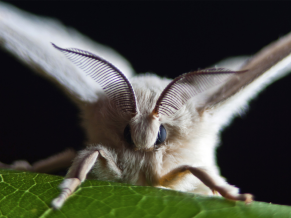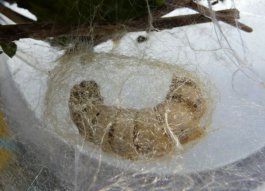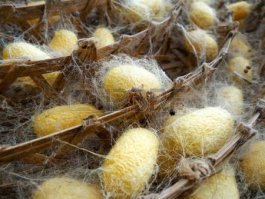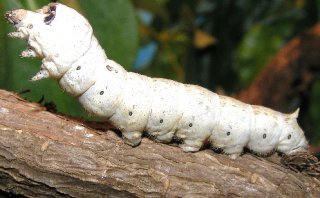- Home
- Resurrection ▾
-
Learn ▾
- Free library
- Glossary
- Documents
- Initiation
-
Shaped fabrics
- Introduction
- Popularization
- Definitions
- Le métier de façonné
- Principes du façonné
- Mécaniques de façonné
- Le jeu des crochets
- Les cartons
- Chaîne des cartons
- Mécanique 104 en détail
- Pour en finir
- Montage façonné
- Empoutage 1/3
- Empoutage 2/3
- Empoutage 3/3
- Punching, hanging and dip
- Autres façonnés
- Façonnés et Islam
-
Cours de tissage 1912
- Bâti d'un métier
- Le rouleau arrière
- Les bascules
- Formation du pas
- Position de organes
- Mécanique 104 Jacquard
- Fonctionnement 104
- Lisage des cartons
- Le battant du métier
- Le régulateur
- Réduction et régulateur
- Mise au métier d'une chaîne
- Mise en route du métier
- Navettes à soie
- Battage
- Ourdissage mécanique
- Préparation chaînes et trames
- Equipment ▾
- Chronicles ▾
- Fabrics ▾
- Techniques ▾
- Culture ▾
- Language ▾



The silkworm is born from an oval egg whose diameter is about 1 mm. Eggs are called seeds.
At the time of laying, their color is pale yellow. In five or six days it becomes reddish grey and then slate grey. The eggs that remain yellow are not fertilized and dry out quickly. As the hatch approaches, the color changes from bluish or violet to yellowish to almost white.It takes between 1200 and 2000 eggs to make 1 gram.
Instead of allowing hatching to occur naturally, it has become customary to cause artificial hatching to be rapid, regular, and in connection with the vegetation of the mulberry tree that feeds the silkworm.
The seeds of silkworm are delivered to the educators (one does not say breeders) or magnaniers.
As the eggs are hatched, small caterpillars about 3 mm long, dark brown in color, are seen.The exclusive food of the silkworm is the leaf of the mulberry tree.The education of Bombyx mori generally begins in may and lasts from 28 to 32 days, sometimes extending to 45 days.

Sericulture
The magnanerie (from the occitan magnan, which designates the bombyx from the mulberry tree) is the place where Bombyx Mori, the silkworm of the mulberry tree, is raised.
Its existence in the larval state is divided into five ages, the duration of which is variable. Each age is separated from the next by a moult. The silkworm stops eating, and in a very particular position, it retains an almost complete immobility for 24 to 36 hours. Meanwhile his skin detaches from his body and forms a new one. Its growth is prodigious and in 28 days it passes from 3 to 87 mm, a magnification of 29 times.
It happens that two worms come together to build a cocoon and find themselves enclosed within the same cocoon. This cocoon, known as douppion, depreciates the value of the crop but will nevertheless give rise to its exploitation. A thick, irregular and flamed thread will be drawn from it, the doubling.
The silkworm is transformed into a chrysalis, then into a butterfly, which is extracted from the cocoon by piercing it.
The cocoons which have been pierced by the exit of the butterflies are unfit to supply silk, they are used in the manufacture of silk schappe. The chrysalises must therefore be killed. Two methods are used: steam smothering and hot smothering.
Steaming is done in closed chambers where the cocoons are spread on thin-walled trays and a steam stream raises the temperature to 80 degrees centigrade. This operation lasts from eight to ten minutes. The cocoons are then dried.
The thread secured by the silkworm is referred to as drool. It consists of two strands of fibroin, each surrounded by sandstone and welded together. When it is released into the open air, fibroïne almost solidifies almost instantaneously and acquires valuable qualities. The silk is elastic, tenacious and ductile.
Since the cocoon consists of a continuous thread, it is possible, by dissolving or softening the sandstone, to draw the coiled sliver: it is the spinning. The length of the drool varies from 480 to 900 meters. Its diameter varies from 30 to 40 thousandths of a millimeter.